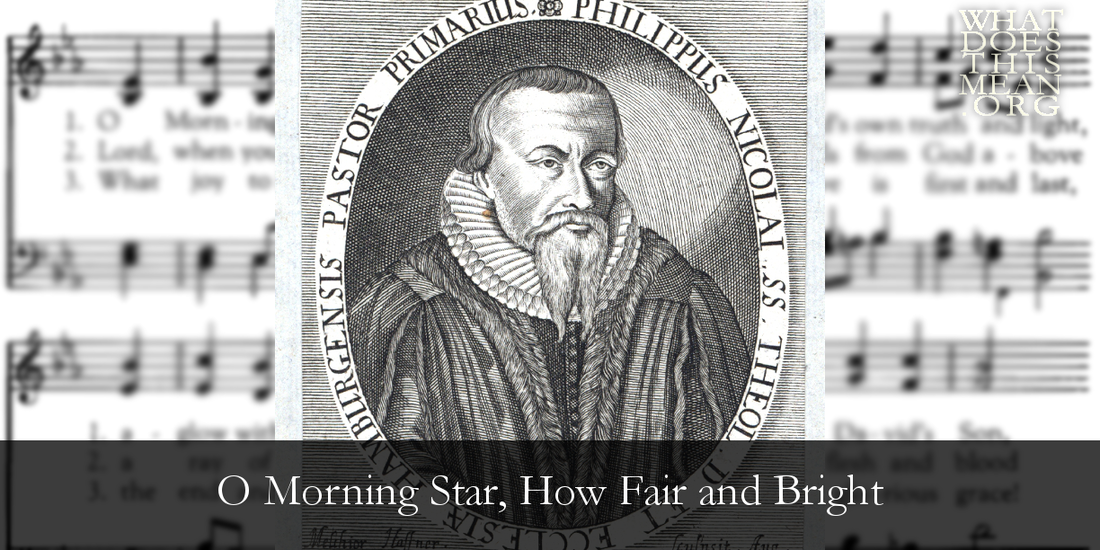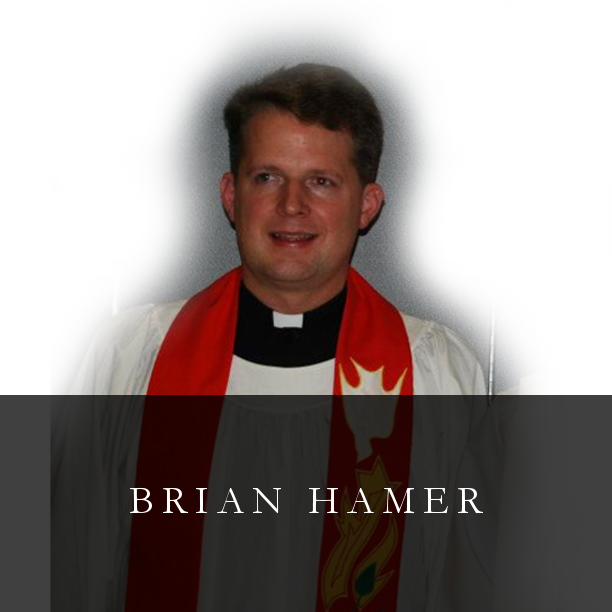| Now has the gracious, holy God most mercifully preserved me amid the dying from the dreadful pestilence and wonderfully spared me beyond all my thoughts and hopes, so that with the prophet David I can say to Him, “Oh, how great is the goodness, which Thou hast laid up for them that fear Thee” (quoted in The Handbook to the Lutheran Hymnal, p. 556). |
| O Morning Star, how fair and bright! You shine with God’s own truth and light, Aglow with grace and mercy! Of Jacob’s race, King David’s son, Our Lord and master, You have won Our heart to serve You only! Lowly, holy! Great, and glorious, All victorious, Rich in blessing! Rule and might o’er all possessing (LSB 395.1). |
The tune by the same name, Wie Schӧn Leuchtet, is a perfect match for the text. Listen to a setting by an unidentified composer for viols and soprano (TLH 343, st. 6), sung in German. Hear how the stately tune, especially the large leaps in the opening statement, is fitting for the admonition to “Lift up the voice and strike the string” (Zwingt die Saiten in Kithara / Under lasst die süsse Musika).
| Lift up the voice and strike the string, Let all glad sounds of music ring In God’s high praises blended. Christ will be with me all the way, Today, tomorrow, every day, Till traveling days be ended. Sing out, Ring out Triumph glorious, O victorious, Chosen nation; Praise the God of your salvation. |
| Recitative: When Jesus the Lord and God, was born in Bethlehem in the land of Judea, behold from the east, [to] the city of Jerusalem, There came the wise men and said, Trio: “Say, where is he born the King of Judea? For we have seen his star and are come to adore Him.” Chorus: Then shall a star from Jacob come forth and a scepter from Israel rise up and dash in pieces princes and nations. [Chorale]: How brightly beams the morning star … |
In his magisterial study, Johann Sebastian Bach and Liturgical Life in Leipzig, Günther Stiller notes that Nicolai’s Queen of Chorales “served as hymn of the day for the 20th Sunday after Trinity, which annually took note of the Sacrament of the Altar in a special manner through the Gospel reading with its parable of the royal wedding feast (Matt. 22:1-14)” (p. 83). This precedent suggests two additional places for “O Morning Star” in our liturgical life: as a distribution hymn during the Lord’s Supper and the Hymn of the Day for Trinity 20 in the one-year lectionary (or Proper 23 in LSB, Series A). See how the final stanza, drawing heavily on selected passages from Revelation, is fitting during the distribution of the Blessed Sacrament:
| What joy to know, when life is past, the Lord we love is first and last, The end and the beginning! He will one day, oh, glorious grace, Transport us to that happy place / Beyond all tears and sinning! Amen! Amen! Come, Lord Jesus! Crown of gladness! We are yearning for the day of your returning! |
May I suggest that this two-fold epiphany is precisely the point of Nicolai’s hymn? The Lord’s Supper is the Mirror of Joy for those whose commonwealth is in heaven (Phil 3:20). In the Eucharist, all that is true of Christ in eternity is true of us on earth, as we pray to God Almighty “that we, who know thee now by faith, may after this life, have the fruition of thy glorious Godhead” (Collect for Epiphany Day, TLH p. 58).



 RSS Feed
RSS Feed
